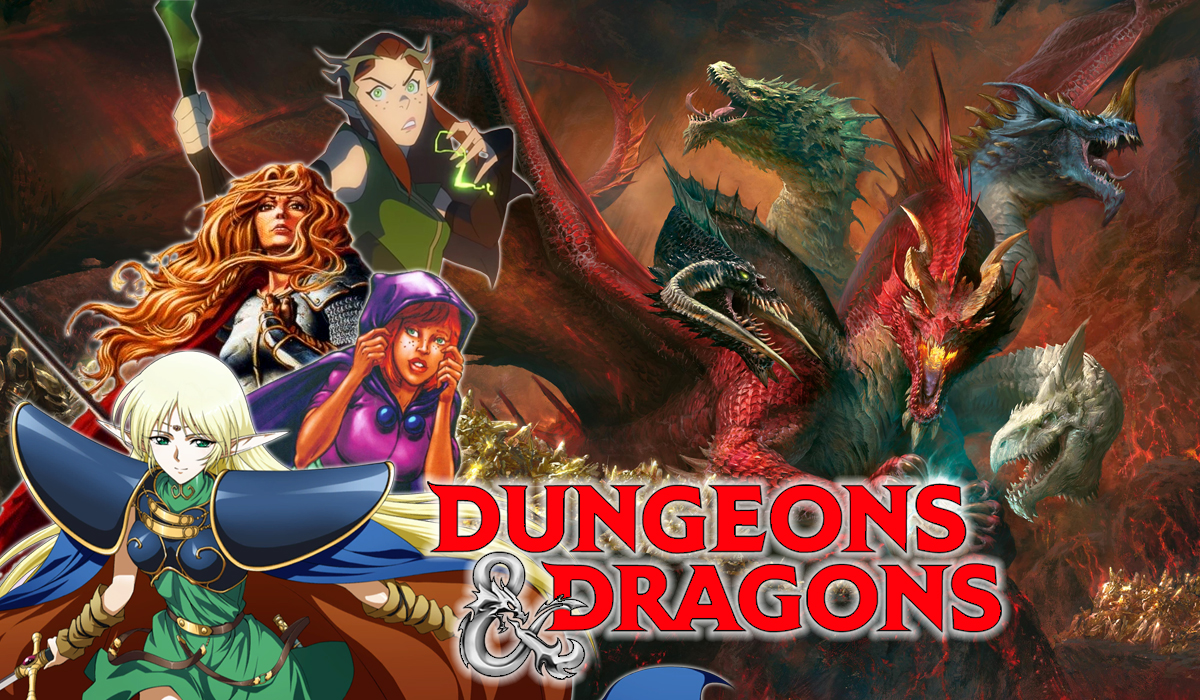On the horizon would be the theatrical release of Dungeons & Dragons: Honor Among Thieves. The film would seek to take advantage of a resurging popularity in the pioneering tabletop roleplaying game created in 1974 by Gary Gygax and Dave Ameson. The renewed interest in the brand had been the result of the streaming and broadcasting of game sessions from the likes of Critical Role and The Adventure Zone showcasing the thrill and excitement in playing the game, managing to become sudden cultural sensations over the past several years.
 The brand was also being displayed in other media with positive results. From its use in Stranger Things and The Big Bang Theory to its influence on the Pixar film Onward to tribute parodies in Gravity Falls and My Little Pony: Friendship is Magic. Even celebrities publicly expressed their love with Joe Manganiello regularly hosting sessions that included Vince Vaughn, Game of Thrones showrunner DB Weiss, Rage Against The Machine’s Tom Morello, and “The Big Show” Paul Wight. The game was garnering its biggest mainstream appeal since the 1980’s.
The brand was also being displayed in other media with positive results. From its use in Stranger Things and The Big Bang Theory to its influence on the Pixar film Onward to tribute parodies in Gravity Falls and My Little Pony: Friendship is Magic. Even celebrities publicly expressed their love with Joe Manganiello regularly hosting sessions that included Vince Vaughn, Game of Thrones showrunner DB Weiss, Rage Against The Machine’s Tom Morello, and “The Big Show” Paul Wight. The game was garnering its biggest mainstream appeal since the 1980’s.
It would only be natural for Wizards of the Coast, the current owners, to try adapting it into other mediums. But while it had managed to establish a line of video games, novels, and comic books, its actual presence in film and television had been limited. This was largely because, at its heart, Dungeons & Dragons could be about anything. While supplemental content had been developed, there essentially wasn’t any one true story to encompass the whole of the franchise. Thus making a Dungeons & Dragons program would be complicated and challenging.
As such, there had only a few adaptations made. So few, in fact, that a couple were actually translations of gaming sessions and would branch out to become their own franchises. The high fantasy nature generally used for the brand would make animation ideal to be used in the adaptations. But as challenging as it would be just to develop a Dungeons & Dragons program for the screen, it would be just as challenging to execute. Attempting to convey the spirit and mechanics of the game would prove to be rather tricky.
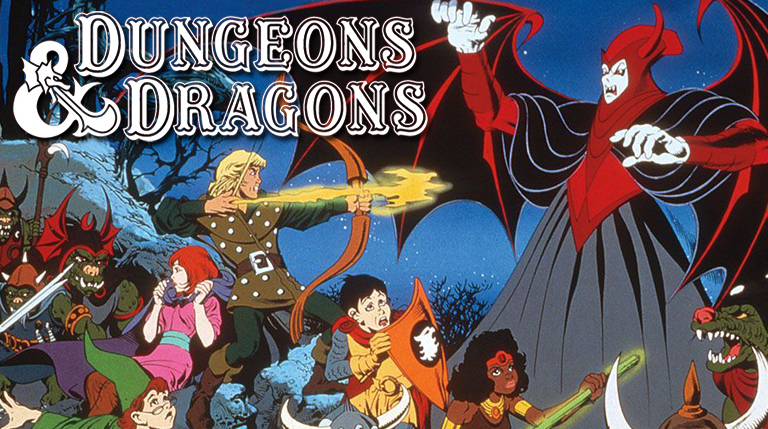 Dungeons & Dragons really started to surge in popularity in the early 1980’s. Alongside an impressive television commercial containing both live-action and animation, original publishers TSR, Inc. looked to further capitalize on the increased interest. This would result in them partnering with Marvel Productions in developing a Saturday morning cartoon for CBS that was simply titled Dungeons & Dragons. The show would tell a seemingly never-ending quest of six teens looking for a way home after being mysteriously transported to The Realm.
Dungeons & Dragons really started to surge in popularity in the early 1980’s. Alongside an impressive television commercial containing both live-action and animation, original publishers TSR, Inc. looked to further capitalize on the increased interest. This would result in them partnering with Marvel Productions in developing a Saturday morning cartoon for CBS that was simply titled Dungeons & Dragons. The show would tell a seemingly never-ending quest of six teens looking for a way home after being mysteriously transported to The Realm.
While the show used aspects of the game, such as the teens having specific class roles, it didn’t necessarily follow the core mechanics entirely. Yet it did capture the spirit of the game in that the teens were challenged to think their way through situations rather than charging into battle. This was noted with their magical items being defensive in nature, exemplified by Sheila having the Cloak of Invisibility or Eric using the Griffon Shield that projected a protective force field. It wasn’t so much winning battles as it was surviving encounters.
 Marvel Productions had a working relationship with the renowned Japanese studio Toei Animation. As such, the animation would be of a high quality compared to most other Saturday morning cartoon shows. This allowed for experimentation with darker graphical designs one might expect from its title. From the presence of a cursed skeleton warrior to the varying magical attacks from the evil five-headed dragon goddess Tiamat, there was always something dangerous and exciting that made the show visually unique and impressive.
Marvel Productions had a working relationship with the renowned Japanese studio Toei Animation. As such, the animation would be of a high quality compared to most other Saturday morning cartoon shows. This allowed for experimentation with darker graphical designs one might expect from its title. From the presence of a cursed skeleton warrior to the varying magical attacks from the evil five-headed dragon goddess Tiamat, there was always something dangerous and exciting that made the show visually unique and impressive.
The Dungeons & Dragons animated series was a big hit in its own right, having led its time slot for the majority of its run before declining ratings resulted in its cancellation without a proper finale made. Rights issues would hamper a lasting legacy some and a few within the Dungeons & Dragons community would look down on the premise when applied against the game’s darker aspects. The show would nevertheless be fondly regarded in representing the brand positively and for pushing the envelope for a Saturday morning cartoon.
Dan’s Review: I’m of the generation that grew up on the animated series. It was what I thought of most when it came to the brand and the show itself was an enjoyable romp to watch. As I’ve gotten older, I’ve been more mesmerized by the talent that worked on the show, such as pre-Optimus Prime Peter Cullen voicing the villain Venger and show writers that included Batman: The Animated Series greats Paul Dini and Michael Reaves. The animated series was a wonderful trip down memory lane that was worth revisiting from time to time.
 In Japan in 1986, Ryo Mizuno and his Group SNE serialized their gaming sessions as Dungeons & Dragons “replays” in the magazine Comptiq. Mizuno would go further by publishing the stories of human fighter Parn and his adventuring party into a successful series of novels called Record of Lodoss War. It’s popularity would see eventual animation adaptations, first with a 13-episode original video animation (or OVA) from Madhouse Studios in 1990 followed by AIC adapting the Chronicles of the Heroic Knight story arc as a television series in 1998.
In Japan in 1986, Ryo Mizuno and his Group SNE serialized their gaming sessions as Dungeons & Dragons “replays” in the magazine Comptiq. Mizuno would go further by publishing the stories of human fighter Parn and his adventuring party into a successful series of novels called Record of Lodoss War. It’s popularity would see eventual animation adaptations, first with a 13-episode original video animation (or OVA) from Madhouse Studios in 1990 followed by AIC adapting the Chronicles of the Heroic Knight story arc as a television series in 1998.
Lodoss War would retain much of the mechanics and rules from Dungeons & Dragons even as the series evolved through its numerous adaptations. A key part of this would be the utilization of the classes to shape character personalities. Being a fighter, Parn would often be impulsive as he was brave. Etoh, on the other hand, would be cautious and thoughtful being a priest. Encounters would also create a sense of challenge, forcing them to determine if they were strong enough to contend with a dragon, much less an ancient dragon.
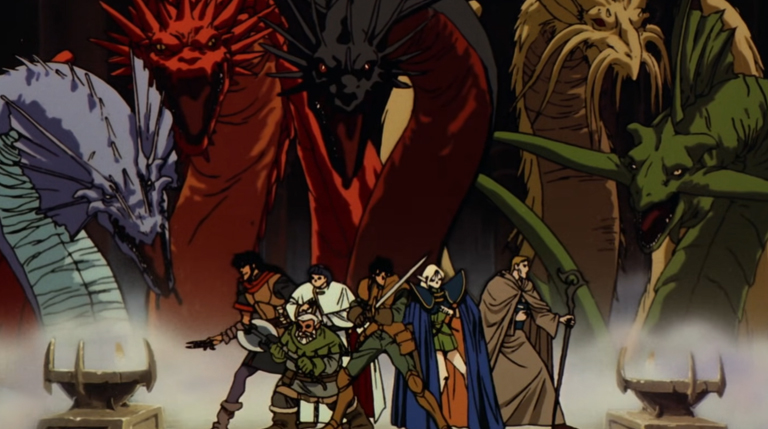 The series had been looked upon as pioneering the presentation of high fantasy for Japanese audiences. Madhouse Studios would take it further with how high fantasy would be visualized in anime as the original OVA series had often been regarded as an elite title within the genre. Mixing the look of medieval culture with their tried-and-true approach in animating stylish action sequences, the OVA series was a majestic beauty to behold with rich details that had allowed for it to hold up and age stupendously in the years since its release.
The series had been looked upon as pioneering the presentation of high fantasy for Japanese audiences. Madhouse Studios would take it further with how high fantasy would be visualized in anime as the original OVA series had often been regarded as an elite title within the genre. Mixing the look of medieval culture with their tried-and-true approach in animating stylish action sequences, the OVA series was a majestic beauty to behold with rich details that had allowed for it to hold up and age stupendously in the years since its release.
While the anime scene had managed to expand to unprecedented regularity and recognition, Record of Lodoss War would quietly remain a seminal favorite over the years. It would set the standard upon which every other high fantasy anime would be measured to and continued to evolve, such as recently releasing the video game Deedlit in Wonder Labyrinth. The Dungeons & Dragons influence would be such that Group SNE would create their own game, Sword World RPG, upon which they would continue to craft similar high fantasy adventures through.
Dan’s Review: A great deal of my visualization for high fantasy would end up coming largely from Record of Lodoss War. I was enchanted from the first moment I saw the OVA, albeit catching it at its climax. It nevertheless interested me enough to check it out as much as I could and really liked what it presented. Deedlit would embody what elves were like for me to such a degree that I felt true elves needed to have as long and pointy of ears like her. It would remain one of my favored anime titles, certainly among those in the high fantasy genre.
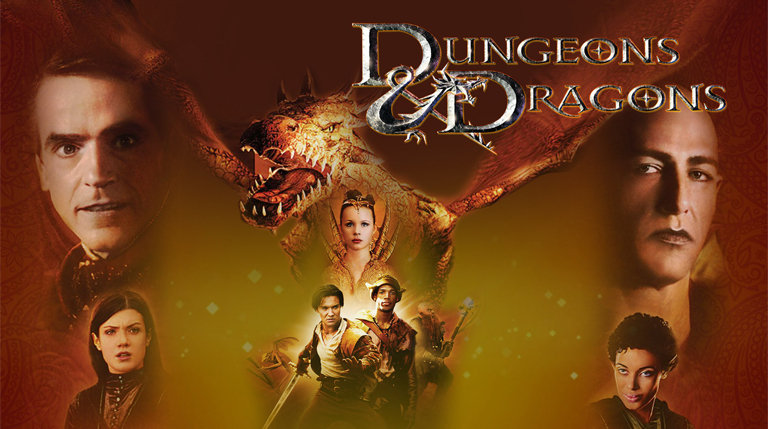 After numerous attempts that dated as far back as the 1980’s, a Dungeons & Dragons feature film was finally released in 2000. Directed by Courtney Solomon, the film told of a ragtag group of assorted folk coming together to retrieve a scepter that controlled red dragons before a power-hungry mage could use it to oppose the land’s Empress and her gold dragons. The difficulties of getting the film made were unfortunately displayed throughout the film, showing just how challenging it was for the first-time director to handle.
After numerous attempts that dated as far back as the 1980’s, a Dungeons & Dragons feature film was finally released in 2000. Directed by Courtney Solomon, the film told of a ragtag group of assorted folk coming together to retrieve a scepter that controlled red dragons before a power-hungry mage could use it to oppose the land’s Empress and her gold dragons. The difficulties of getting the film made were unfortunately displayed throughout the film, showing just how challenging it was for the first-time director to handle.
Solomon’s attempts to bring to life the essence of the game was heavily hampered by the complications faced since securing the rights to make the film as a producer in 1990. The end result saw a relative lack of utilization of the mechanics. Character classes were not properly defined or showcased and what little of the unique spells that were displayed were modified that they were not entirely accurate. Coupled with a generic screenplay and there was hardly anything that made viewers believe they were being immersed in Dungeons & Dragons.
 The film managed to be made a very small budget in comparison to similar films of the genre. This would certainly have an affect on the presentation of the visual effects. Despite attempts to cut corners and still be able to produce quality content, there was no denying that they looked cheap in the final cut. From small shots like fire burning upon a watery surface to the climatic battle between armies of dragons, the animation came off appearing no better than kind of low quality efforts regularly seen on cable television movies.
The film managed to be made a very small budget in comparison to similar films of the genre. This would certainly have an affect on the presentation of the visual effects. Despite attempts to cut corners and still be able to produce quality content, there was no denying that they looked cheap in the final cut. From small shots like fire burning upon a watery surface to the climatic battle between armies of dragons, the animation came off appearing no better than kind of low quality efforts regularly seen on cable television movies.
The Dungeons & Dragons feature film was a commercial and critical failure. It did very little in generating any interest in the brand and would be immediately swept under the rug. Surprisingly, it nevertheless managed to spawn two direct-to-video sequels in Wrath of the Dragon God and The Book of Vile Darkness. Both films managed to be a somewhat closer in showcasing a bit of the game mechanics than the theatrical film. But in the end, the films were widely disliked and many within the community wanted to forget they ever existed.
Dan’s Review: I had hoped that Jeremy Irons playing the villain Profion would have been enough to give the film a pass when I first saw it. But despite Irons going hilariously over-the-top and with brief, but no less nice appearances from Tom Baker and Richard O’Brien, the film was just bad. And time had made it worse, looking at the poorly aged animation and cringing with embarrassment. I’ve seen some of Wrath of the Dragon God, but it’s hardly any better. I’m concerned about watching it again, fearful that I won’t laugh as much as I would cry instead.
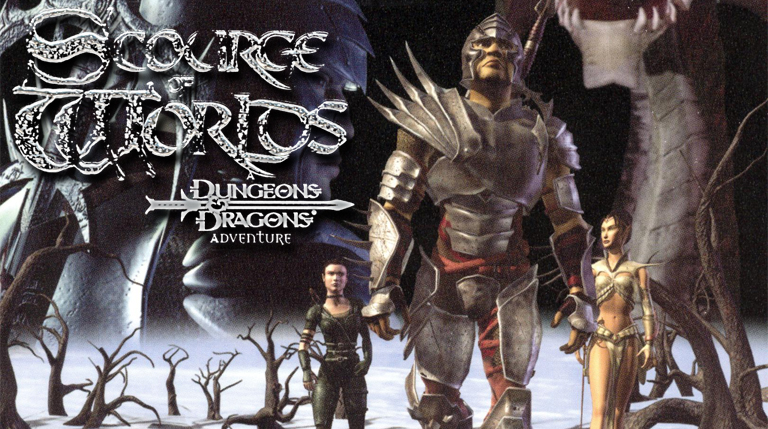 As a result of the commercial failure of the feature film, Wizards of the Coast would scale back on further attempts at adapting the game for the screen. At the same time, DVD was emerging as a viable media viewing platform. The interactive options the format offered was intriguing enough to try out a smaller feature in 2003 with Scourge of Worlds, a choose-your-own-adventure that allowed audiences to determine how the story of a trio of heroes trying to prevent an unspeakable evil from being unleashed would play out from start to finish.
As a result of the commercial failure of the feature film, Wizards of the Coast would scale back on further attempts at adapting the game for the screen. At the same time, DVD was emerging as a viable media viewing platform. The interactive options the format offered was intriguing enough to try out a smaller feature in 2003 with Scourge of Worlds, a choose-your-own-adventure that allowed audiences to determine how the story of a trio of heroes trying to prevent an unspeakable evil from being unleashed would play out from start to finish.
Scourge of Worlds would be the earliest feature to utilize pre-existing content. It would take place in Greyhawk, a campaign setting that was initially designed by Gary Gygax, and featured established characters in human fighter Regdar, halfling rogue Lidda, and elven wizard Mialee. The choose-your-own-adventure approach would give viewers a sample of how one could play the game, though it didn’t show off the full mechanics. Furthermore, it was still relatively linear whereas the game would allowed for thinking outside the box.
 The animation for Scourge of Worlds had not aged all that well. Even at the time, it was hardly of any quality better than what was already being used on television. The characters were stiff as rocks, regardless of the occasional wild facial expressions. Despite the use of motion capture, movements lacked fluidity. And the designs were about as good as they were going to get with the financial and software limitations director Dan Krech and his studio faced. It might have seemed interesting at the time, but the animation would come off as basic nowadays.
The animation for Scourge of Worlds had not aged all that well. Even at the time, it was hardly of any quality better than what was already being used on television. The characters were stiff as rocks, regardless of the occasional wild facial expressions. Despite the use of motion capture, movements lacked fluidity. And the designs were about as good as they were going to get with the financial and software limitations director Dan Krech and his studio faced. It might have seemed interesting at the time, but the animation would come off as basic nowadays.
The potentiality of what could have been done for the Dungeons & Dragons brand with choose-your-own-adventure animated DVD features like Scourge of Worlds might have sounded good on paper. It was the execution that would cause it to be lost in the abyss of time as it would be forgotten in the years following its release. A real lack of genuine interest coupled with animation that just wasn’t up to snuff to properly flourish. It ended up being nothing any one would go out of their way to check out, all things considered.
Dan’s Review: Curiosity got the best of me and I decided to give this one a look. It wasn’t quite as terrible as I feared, but it wasn’t any better than merely decent at best. It’s super obvious how old this felt compared to the animated fares that would emerge in the years that followed, with its sluggish movements to the lack of refinement in the details. And I never got a feel that this represented the brand all that well, rather coming off as a standard direct-to-video animation title that just happened to have the Dungeons & Dragons name associated.
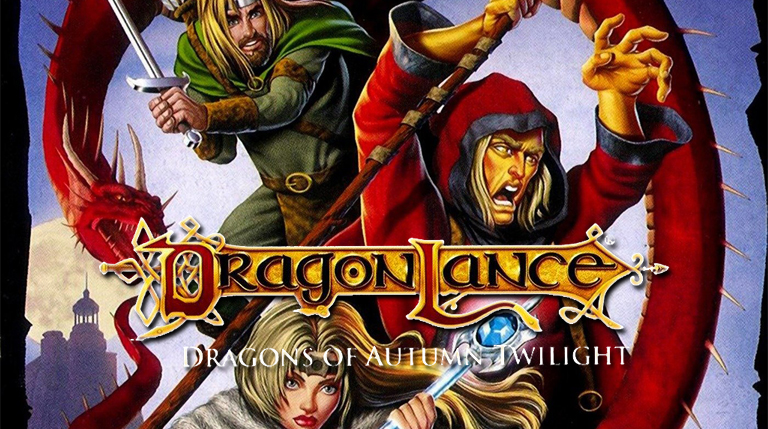 Before Record of Lodoss War in Japan, a publication of gaming sessions was first done in 1984 with the beloved Dragonlance series. Initially conceived to support the Dragons of Despair gaming module, the first novel Dragons of Autumn Twilight would enchant fans with its story of an adventuring party reuniting in time to be swept up in the opening stages of a great war. There was a great desire to see the Dragonlance stories adapted and that wish would be fulfilled by Paramount Pictures with a direct-to-video animated feature released in 2008.
Before Record of Lodoss War in Japan, a publication of gaming sessions was first done in 1984 with the beloved Dragonlance series. Initially conceived to support the Dragons of Despair gaming module, the first novel Dragons of Autumn Twilight would enchant fans with its story of an adventuring party reuniting in time to be swept up in the opening stages of a great war. There was a great desire to see the Dragonlance stories adapted and that wish would be fulfilled by Paramount Pictures with a direct-to-video animated feature released in 2008.
Unfortunately, someone made the decision to try to adapt the entirety of the over 400-page narrative into a 90-minute feature. As a result, the richly detailed story was heavily condensed in favor of moving from scene to scene as quickly as possible. This would give little to no time for proper character development to be displayed and hardly any of the game’s mechanics to be showcased outside of the briefest of moments to explore the human wizard Raistlin and the consequences he would physically bare in his pursuit of power.
 In addition to the narrative being woefully truncated, what really disappointed fans was the animation. Being a direct-to-video feature was hardly an ideal format to begin with. But it just seemed as though there was never any genuine desire to really bring to life such a beloved world in a satisfying manner. The animation came off as a poor attempt at replicating the art style from a previous comic book adaptation combined with some computer generated imagery that failed to impress. A shockingly huge visual downgrade compared to what fans were imagining.
In addition to the narrative being woefully truncated, what really disappointed fans was the animation. Being a direct-to-video feature was hardly an ideal format to begin with. But it just seemed as though there was never any genuine desire to really bring to life such a beloved world in a satisfying manner. The animation came off as a poor attempt at replicating the art style from a previous comic book adaptation combined with some computer generated imagery that failed to impress. A shockingly huge visual downgrade compared to what fans were imagining.
Much like the Dungeons & Dragons feature film before it, the direct-to-video animated adaptation of Dragons of Autumn Twilight was a major letdown to fans and to Wizards of the Coast. The feature hardly made any traction in piquing interest, with lack of any sort of marketing making sure of that. The film just came and went in the wind. Those who actually did manage to take a look were not impressed with what they saw, be it the bad animation or a presentation that lacked the proper context that made it such a beloved title in the first place.
Dan’s Review: I had thoroughly enjoyed the Dragons of Autumn Twilight novel long before the animated feature was made. Given that it was direct-to-video, I kept my expectations low. The voice acting at least tried to make the film work, with Kiefer Sutherland in particular being an excellent choice to voice Raistlin. But in the end, it still managed to be a disappointment. I’m actually surprised Paramount decided against what would have been an obvious cash-grab and tried to make sequels regardless of the negative reception.
 Dungeons & Dragons would experience a renaissance in the 2010’s thanks to the advent of broadcast streaming. At the forefront would be Critical Role, the gaming sessions of well-known animation voice actors that became a surprise global phenomenon. Following one of the most successful Kickstarter campaigns to date, a much desired animated adaptation of mercenaries whose need for coin would lead them into becoming the unexpected heroes in the land would come to fruition with The Legend of Vox Machina being released in 2022.
Dungeons & Dragons would experience a renaissance in the 2010’s thanks to the advent of broadcast streaming. At the forefront would be Critical Role, the gaming sessions of well-known animation voice actors that became a surprise global phenomenon. Following one of the most successful Kickstarter campaigns to date, a much desired animated adaptation of mercenaries whose need for coin would lead them into becoming the unexpected heroes in the land would come to fruition with The Legend of Vox Machina being released in 2022.
A major part of what made Critical Role so popular was the ability of the players to adapt and work off the results of their rolls, turning the mechanics of the game into the foundations upon which to develop compelling story moments. The Legend of Vox Machina carefully enhanced these for even greater dramatic affect, showcasing the excitement of what would happen from a single action. As such, importance would be carefully given to how things worked under the game’s rules and the alluring narrative benefits they could provide.
 Thanks to the Kickstarter campaign’s overwhelming success, the animation quality was assured to be at its best and then some. A joyful mix of Japanese animation with the graphic appeal of some of modern western titles created a visual look that was stunning to behold. The added benefit of how descriptive the players were with their role playing allowed for the animators at Titmouse, Inc. to go the extra mile in details that made for displaying some of the most beautiful and majestic scenes ever seen even in the high fantasy genre.
Thanks to the Kickstarter campaign’s overwhelming success, the animation quality was assured to be at its best and then some. A joyful mix of Japanese animation with the graphic appeal of some of modern western titles created a visual look that was stunning to behold. The added benefit of how descriptive the players were with their role playing allowed for the animators at Titmouse, Inc. to go the extra mile in details that made for displaying some of the most beautiful and majestic scenes ever seen even in the high fantasy genre.
The Legend of Vox Machina further elevated what was already a very successful production of Dungeons & Dragons. From utilizing the game mechanics to create rich storytelling moments to the top-notch animation visualizing the heart-stopping action, it was everything a fan could hope for and more. Recently, it was announced that the second Critical Role campaign The Mighty Nein would be adapted alongside more seasons of Vox Machina, giving audiences more unique characters and stories originally crafted from playing a game of Dungeons & Dragons.
Dan’s Review: I’m pretty sure everyone would know by now what a Critter (or Critical Role fan) I had become over the years. It would be the catalyst for my actually playing Dungeons & Dragons. That I would like The Legend of Vox Machina would be a given. What delighted me was that it managed to be quite an excellent series in its own right. I was enchanted from the first frame onward savored every second that was produced. This would be the fanboy in me saying this, but the show would be the finest representation of the brand to date.
 As could be seen, adapting Dungeons & Dragons for film and television was not something that could be done with any relative ease. That the game could be played to be about anything meant that any one looking to develop a program based on the brand would have to conceive of virtually everything from the narrative to how the mechanics would be utilized. And how to present the uniqueness of those mechanics would be just as challenging to showcase, often conflicting with creating a competent narrative and thereby causing both to suffer in quality.
As could be seen, adapting Dungeons & Dragons for film and television was not something that could be done with any relative ease. That the game could be played to be about anything meant that any one looking to develop a program based on the brand would have to conceive of virtually everything from the narrative to how the mechanics would be utilized. And how to present the uniqueness of those mechanics would be just as challenging to showcase, often conflicting with creating a competent narrative and thereby causing both to suffer in quality.
Even the use of animation, a medium in which anything could be possible, would have mixed results. When they worked, they could be quite majestic to view. The really good ones could also end up setting the standard for the look of the high fantasy genre. When they didn’t work, they would age poorly and run the risk of setting things back a step or two. Often it would come down to understanding how animation can be used to visualize just about anything that could be imagined in playing Dungeons & Dragons and for it to not be taken for granted.
Perhaps because there were not that many adaptations, each one were special regardless of their varying quality. The unsuccessful titles seemed to be able to fail in an intriguing manner to elicit curiosity. Those that succeeded helped elevate the brand and provide a positive representation of the game. The next time a Dungeons & Dragons adaption would be released, such as the upcoming Honor Among Thieves, it would be interesting to see, for good or bad, what unique narrative could be conceived from the imagination and how animation could bring it to life.
 In Honor of Michael Reaves
In Honor of Michael Reaves
This retrospective was in the middle of being written when Michael Reaves passed away at the age of 72. Reaves became the primary writer of the Dungeons & Dragons animated series from the second season onward. He also wrote what would have been the finale to the story and the foundation for a new adventure had a fourth season proceeded before the series was canceled. Reaves would post the script online to great fan interest and it would lead BCI Eclipse to produce it as an audio drama for their DVD release of the series.


